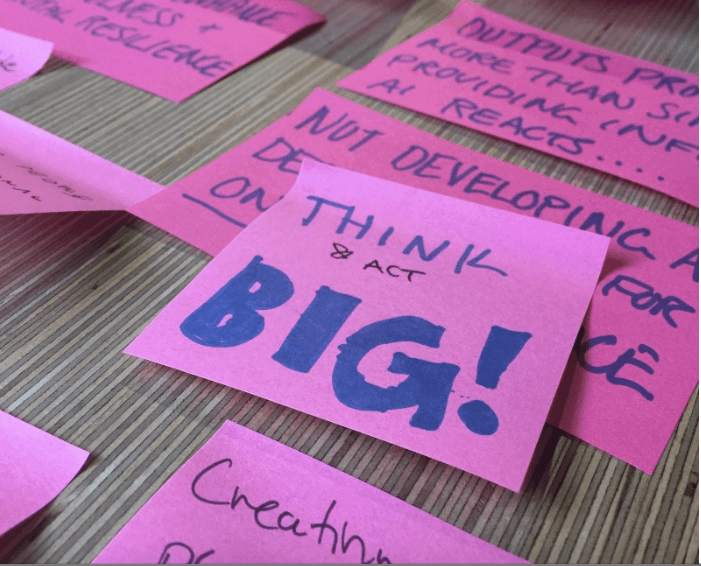Seven reasons to plan less, make more and transform your business

Not so long ago Jason Fried of Basecamp published a small piece called “Planning is Guessing” — you don’t need to read it to get his point. He's right, and when it comes to digital transformation, there is a better way to achieve success.
Planning is the antithesis of action. Planning is taking a bet on the future. The further into the future you try and forecast, the riskier the bet. You can make it even riskier by making unvalidated assumptions.
The most obvious manifestation of this comes in the form of Gantt charts but actually includes things like big design up-front, lists of requirements in an RFP, stakeholder driven functionality, hiring management consultants, teams working in silos — the list just goes on.
Action is the antithesis of planning. This is what informs how we do things at Made by Many: we solve problems and answer questions by making stuff.
Making stuff is our way of expressing our bias for action — actually doing stuff, testing stuff and revising our assumptions based on evidence, rather than just thinking from inside some kind of cosy creative bubble.
Here are the seven key reasons that making, as a tool, beats anything else, hands down:
Making is cheaper than planning: if you make any kind of large-scale bet on the future, you’d better hope you’re right. Making small incremental bets that you can validate as you go is the best insurance policy against large-scale failure and the costs that come with it.
Making is adaptability: a making-led approach makes it easier to adapt to what you find and allows you to exploit and explore emergent opportunities.
Making is a problem solving tool: making gets you out there co-solving problems face to face with users. Solving complex problems in isolation is hard and it’s easy to go off course. Users will anchor you to reality.
Making is learning: when you make, you give yourself the opportunity to learn why something does or doesn’t work (bonus: before it’s too late). This kind of learning generates new hypotheses to test and is a fundamental driver of innovation. What you do becomes evidence-based.
Making disrupts groupthink: the evidence provided by making challenges organisational orthodoxy. Decisions and choices become pragmatic, and wasteful lines of pursuit are eliminated, and it helps foster a culture where it’s okay to learn or not know.
Making is the Genchi Genbutsu of digital transformation: Genchi Genbutsu means “actual place, actual thing” and it’s a fundamental principle of the Toyota Production System — that in order to truly understand a situation one needs to go to where work is done.
And finally the most important one: making makes change. Making is the grit in the organisational oyster that accretes the pearl of change. It’s a tangible trigger for change: people can see it and try it. It exists and provokes and encourages them to say: “we want that too”. We’ve seen it time and time again with the work we do, and it’s incredibly gratifying — and that’s why we do it.
Continue reading
Calling all interns!
Summer in London is here again and that means it’s time for us to recruit this year’s team of interns. You’ll have to be quick: applications open today an...
How we co-locate on projects at Made by Many
Riffing on Design
During my heady student days, I spent most of my time (and student loan) travelling up and down the country playing guitar in a pop-punk band. Rather than...


